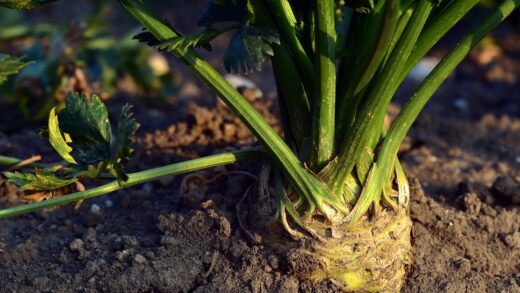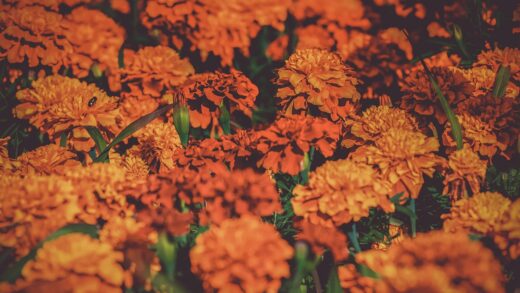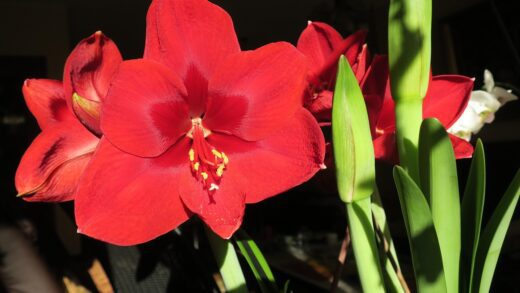Embarking on the journey of planting and propagating the sleeping hibiscus is a deeply rewarding experience for any plant enthusiast. This unique shrub, with its perpetually closed, pendant flowers, offers a touch of the tropics and a fascinating botanical curiosity. Successful establishment begins with a thoughtful planting process, ensuring the young plant has the best possible start in its new environment. The joy of cultivation is further amplified when one learns to propagate this plant, creating new life from a single parent specimen. This process, whether through seeds or cuttings, connects the gardener to the fundamental cycles of plant life and allows for the sharing of this exceptional plant with others.
The initial planting of a nursery-bought sleeping hibiscus is a critical moment that sets the stage for its future health. It is a process that requires gentle handling and attention to the specific needs of the root system. Unlike some robust plants that can tolerate rough treatment, the sleeping hibiscus benefits from a careful transition to its new home, whether it be a decorative container or a specially prepared spot in the garden. The chosen location, the quality of the soil, and the initial watering are all pivotal factors that will influence how quickly the plant establishes itself and begins to thrive. A successful planting is not merely placing a plant in soil, but rather creating an environment where it can flourish.
Propagation, the art and science of creating new plants, is particularly gratifying with the sleeping hibiscus. While it can be grown from seed, vegetative propagation through stem cuttings is by far the more common and reliable method. This technique essentially clones the parent plant, ensuring that the new plants will have the exact same characteristics, from the shape of their leaves to the vibrant color of their unique flowers. Mastering the art of taking and rooting cuttings opens up a world of possibilities, allowing you to easily increase your stock of this beautiful plant, create gifts for fellow gardeners, or ensure the continuation of a particularly cherished specimen.
Understanding the plant’s natural growth habits is fundamental to both successful planting and propagation. As a subtropical shrub, it has distinct periods of active growth and relative rest, which should guide the timing of these activities. Planting and taking cuttings are best done during the spring and early summer when the plant’s metabolic processes are at their peak. This ensures that a newly planted specimen will quickly establish its root system and that cuttings will have the best possible chance of developing roots. By working in harmony with the plant’s natural rhythms, we can significantly increase our chances of success in these horticultural endeavors.
Selecting the right location for planting
Choosing the ideal location is the cornerstone of successfully establishing a sleeping hibiscus in your garden or home. This plant flourishes in conditions that mimic the dappled sunlight of its native understory habitat. Therefore, a site that receives several hours of bright, indirect light or morning sun, followed by afternoon shade, is perfect. Direct, intense sunlight, especially in hotter climates, can scorch the leaves, leading to stress and a lackluster appearance. For indoor cultivation, an east-facing window is often ideal, providing gentle morning light without the harsh intensity of the afternoon sun. Observe the light patterns in your chosen spot for a full day before committing to planting.
Beyond light, the chosen location must offer protection from harsh environmental elements. Strong winds can damage the leaves and delicate, pendulous flowers, and can also dry out the plant rapidly. Planting near a wall, fence, or amongst other shrubs can provide a necessary windbreak. Equally important, especially for outdoor planting, is ensuring the site has excellent drainage. While the sleeping hibiscus enjoys consistent moisture, it cannot tolerate waterlogged soil, which leads to root rot. If you have heavy clay soil, it is essential to amend the planting area with organic matter to improve its structure and drainage capabilities.
Consider the plant’s mature size when making your selection. The sleeping hibiscus can grow into a sizeable shrub, often reaching two to three meters in height and spread if left unpruned. Ensure there is adequate space for it to grow to its full potential without being crowded by other plants or structures. Good air circulation around the plant is also beneficial, as it helps to prevent the onset of fungal diseases. However, this must be balanced with the need for protection from strong drafts, so a location with gentle air movement is the goal.
For those in climates with cold winters, the “location” will likely be a container. This provides the flexibility to move the plant indoors when temperatures drop. When choosing a pot, ensure it has ample drainage holes. The material of the pot can also influence watering needs; terra cotta pots are porous and allow the soil to dry out faster, while glazed or plastic pots retain moisture for longer. The container becomes the plant’s entire world, so selecting the right size and type is just as critical as choosing a spot in the garden.
The process of planting
Once you have selected the perfect location, the next step is the physical act of planting. If you are planting in the garden, begin by digging a hole that is approximately twice as wide and just as deep as the root ball of the plant. This loosened soil around the root ball will make it easier for the new roots to penetrate and establish themselves. It is highly beneficial to enrich the backfill soil by mixing it with a generous amount of organic matter, such as compost or well-rotted manure. This will provide a slow-release source of nutrients and improve the soil’s moisture-retaining capabilities.
When you are ready to place the plant in the hole, handle it with care. Gently remove the plant from its nursery pot, trying to disturb the root ball as little as possible. If the plant is root-bound, with a dense mat of roots circling the bottom, you can gently tease them apart with your fingers to encourage them to grow outwards into the new soil. Place the plant in the center of the hole, ensuring that the top of the root ball is level with or slightly above the surrounding ground level. Planting too deeply can lead to stem rot and other issues.
After positioning the plant, begin backfilling the hole with the amended soil. Gently firm the soil around the root ball as you go to eliminate any large air pockets, which can dry out the roots. Avoid compacting the soil too heavily, as this can impede drainage and root growth. Once the hole is filled, create a shallow basin or “moat” of soil around the base of the plant. This will help to direct water to the root zone and prevent runoff during the initial, critical watering period.
The final and most crucial step in the planting process is a thorough and deep watering. Water the newly planted sleeping hibiscus generously, allowing the water to soak in and settle the soil around the roots. This initial watering is vital for establishing good contact between the roots and the new soil, and for hydrating the plant after the stress of transplanting. For the first few weeks after planting, monitor the soil moisture carefully, keeping it consistently moist but not waterlogged, to help the plant establish a strong and healthy root system in its new home.
Propagation from stem cuttings
Propagating the sleeping hibiscus from stem cuttings is an accessible and highly effective method for creating new plants. The ideal time to take cuttings is during the spring or early summer when the plant is in a state of active growth. Look for healthy, vigorous stems that are free from any signs of disease or pests. The best cuttings are typically taken from the tips of the branches and should be semi-hardwood, meaning they are from the current season’s growth that has begun to firm up but is not yet old and woody. A cutting that is too soft and green will tend to rot, while one that is too old and woody will be slow to root.
Using a clean, sharp knife or pruning shears, take a cutting that is approximately 10 to 15 centimeters long. Make the cut just below a leaf node, which is the small bump on the stem where a leaf emerges. These nodes are where the highest concentration of rooting hormones is located, and where the new roots are most likely to form. Once you have your cutting, carefully remove the leaves from the lower half of the stem. It is also wise to remove any flowers or flower buds, as these will divert energy away from the crucial process of root development.
While not strictly necessary, dipping the cut end of the stem in a rooting hormone powder or gel can significantly increase the success rate and speed up the rooting process. The hormone provides a signal to the plant cells to differentiate and form roots. After applying the hormone, you are ready to plant the cutting. Insert the bottom third of the cutting into a pot filled with a light, well-draining rooting medium. A mixture of perlite and peat moss, or coarse sand and compost, works very well for this purpose.
After planting the cutting, water the medium thoroughly. To create a humid environment that encourages rooting, you can cover the pot with a clear plastic bag or the top half of a plastic bottle, creating a mini-greenhouse. Be sure to prop the plastic up so it does not touch the leaves of the cutting. Place the pot in a warm location with bright, indirect light. Keep the rooting medium consistently moist, and within a few weeks to a couple of months, the cutting should develop a healthy root system. You can test for rooting by giving the cutting a very gentle tug; if you feel resistance, it is a sign that roots have formed.
Growing from seed
While propagation from cuttings is more common, growing the sleeping hibiscus from seed can be a fascinating and rewarding endeavor, though it requires patience. The first step is to acquire viable seeds, either by harvesting them from an existing plant after the flowers have faded and a seed pod has formed, or by purchasing them from a reputable supplier. If you are harvesting your own seeds, allow the pods to dry on the plant before collecting them. The pods will typically turn brown and begin to split open when the seeds inside are mature.
To improve the chances of germination, it is beneficial to scarify the seeds before planting. The seeds of the sleeping hibiscus have a hard outer coat that can inhibit water absorption and delay germination. Scarification involves gently scratching or nicking the seed coat. You can do this by carefully rubbing the seeds with a piece of fine-grit sandpaper or making a small nick with a sharp knife, being careful not to damage the embryo inside. After scarifying, soaking the seeds in warm water for several hours or overnight can further soften the seed coat and speed up the germination process.
Once the seeds have been prepared, they can be sown in a seed-starting tray or small pots filled with a sterile, well-draining seed-starting mix. Plant the seeds about half a centimeter deep and lightly cover them with the mix. Gently water the medium to ensure it is moist but not waterlogged. To maintain the necessary humidity for germination, you can cover the tray or pots with a plastic dome or clear plastic wrap. This creates a stable, humid environment that is conducive to sprouting.
Place the seed tray in a warm location that receives bright, indirect light. A consistent temperature of around 21 to 24 degrees Celsius is ideal for germination. The process can be slow and erratic, so patience is key; it may take anywhere from a few weeks to several months for the seeds to sprout. Once the seedlings have emerged and developed their first true leaves, you can remove the plastic cover. Continue to keep the soil moist, and when the seedlings are large enough to handle, they can be carefully transplanted into their own individual pots to continue growing.




















